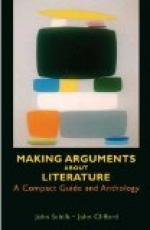A summary account of the experiments performed by myself (and some also by my friend, Dr. Delgado), during the last twelve years, will enable the reader to judge for himself. The experiment has consisted in first applying a captive mosquito to a yellow fever patient, allowing it to introduce its lance and to fill itself with blood; next, after the lapse of two or more days, applying the same mosquito to the skin of a person who is considered susceptible to yellow fever: and, finally, observing the effects, not only during the first two weeks, but during periods of several years, so as to appreciate the amount of immunity that should follow.
Between the 30th of June, 1881, and the 2d of December, 1893, eighty-eight persons have been so inoculated. All were white adults, uniting the conditions which justify the assumption that they were susceptible to yellow fever. Only three were women. The chronological distribution of the inoculations was as follows: seven in 1881, ten in 1883, nine in 1885, three in 1886, twelve in 1887, nine in 1888, seven in 1889, ten in 1890, eight in 1891, three in 1892, and ten in 1893.
The yellow fever patients upon whom the mosquitoes were contaminated were, almost in every instance, well-marked cases of the albuminuric or melanoalbuminuric forms, in the second, third, fourth, fifth, or sixth day of the disease. In some of the susceptible subjects, the inoculation was repeated when the source of the contamination appeared uncertain.
Among the eighty-seven who have been under observation, the following results have been recorded:
Within a term of days, varying between five and twenty-five after the inoculation, one presented a mild albuminuric attack, and thirteen, only “acclimation fevers.”
* * * * *
While Finlay’s theory appeared to be plausible and to explain many of the facts relating to the etiology of yellow fever, his experimental inoculations not only failed to give it substantial support, but the negative results, as reported, by himself, seemed to be opposed to the view that yellow fever is transmitted by the mosquito. It is true that he reports one case which “presented a mild albuminuric attack” which we may accept as an attack of yellow fever. But in view of the fact that this case occurred in the city of Havana, where yellow fever is endemic, and of the eighty-six negative results from similar inoculations, the inference seemed justified that in this case the disease was contracted in some other way than as a result of the so-called “mosquito inoculation.” The thirteen cases in which only “acclimation fevers” occurred “within a term of days varying between five and twenty-five after the inoculation” appeared to me to have no value as giving support to Finlay’s theory; first, because these “acclimation fevers” could not be identified as mild cases of yellow fever; second, because the ordinary method of incubation




